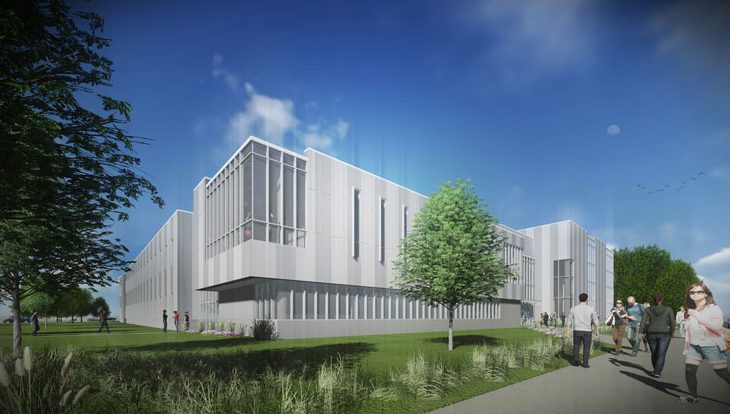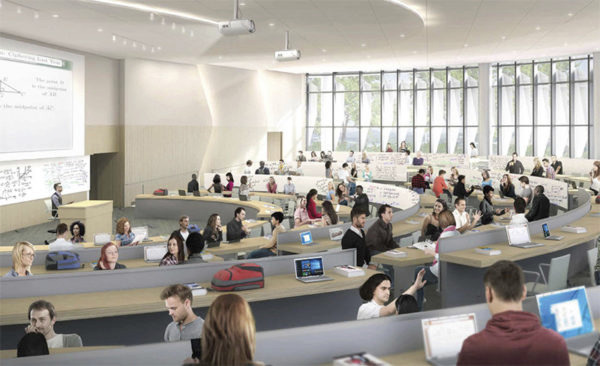New Engineering Innovation Building
IMEG provided mechanical engineering design and services for the new LEED Gold certified Engineering Innovation Building (EIB) at the University of Illinois at Chicago. The 57,500-sf facility is the first new building on UIC’s east campus in more than 25 years and serves as a tool to recruit more engineering students to the university, which has seen enrollment in the College of Engineering nearly double in the last 10 years.
The EIB can accommodate the more than 5,000 students in the College of Engineering and contains the departments of chemical engineering, mechanical and industrial engineering, and civil and materials engineering, providing students with opportunities to collaborate with various disciplines. Prior to construction of the EIB, these departments were located in different buildings on and off campus, without dedicated lab spaces and classrooms. Now, the departments have a centralized location where they can collaborate and innovate.
State-of-the-art labs were of the utmost importance to the university, so the majority of the space is dedicated to them. There is only one traditional classroom in the building; all other classrooms are tied to lab spaces (lab classrooms, theory labs, computer labs, and wet labs). One classroom allows students to learn about chemical engineering concepts while observing related work taking place in an adjacent unit-operations lab, where they can see first-hand what chemical engineering is. The new space can also accommodate research at the molecular and nanoscale levels, with biomolecules and biological cells, and allow researchers to develop new energy systems and study complex fluid phenomena.
The new facility also houses the campus’s first and the Chicago area’s only high-bay structural testing lab, where engineers, industry professionals, and government agencies can develop and test large and heavy infrastructural components and determine how they behave under various loads and conditions. The 6,000-sf lab has a 45-foot-high ceiling and provides unique faculty-developed damage-detection sensors that can generate big data on structural degradation and real-time 3D immersive visualization. Researchers are also able to monitor elements of structural health and develop new materials and infrastructure.
To accommodate all of the research spaces and provide occupant comfort, the mechanical design included air-cooled chillers with a dry-cooler to produce chilled water and take advantage of the free cooling, high-temperature hot water heating source, and a run-around energy recovery loop to transfer energy between the exhaust airstream and outside airstream.
The design is predicted to perform 28 percent better than the ASHRAE 90.1 baseline.









